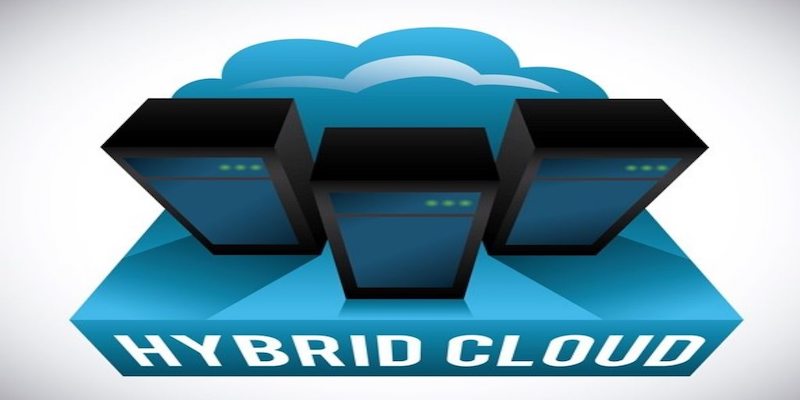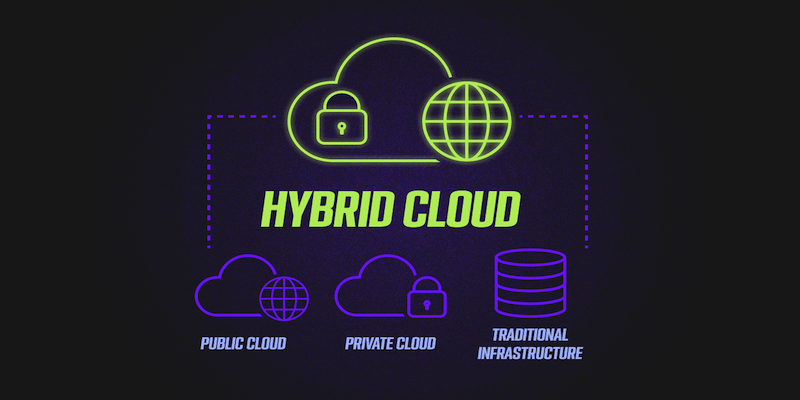In today’s fast-paced digital landscape, businesses are continually seeking innovative ways to enhance their operations, improve scalability, and reduce costs. One technology that has emerged as a game-changer in achieving these goals is hybrid cloud automation. As organizations increasingly adopt hybrid cloud solutions to combine the benefits of both public and private clouds, automation has become the cornerstone of efficient management. In this article, we will explore the concept of hybrid cloud automation, its benefits, challenges, and the best practices to harness its full potential.
1. Understanding Hybrid Cloud

What is Hybrid Cloud?
Hybrid cloud is a cloud computing environment that combines elements of both public and private clouds. In a hybrid cloud setup, some data and applications are hosted in an organization’s private cloud, while others reside in the public cloud. The combination of these two environments enables businesses to enjoy the advantages of both worlds, such as the scalability and cost-effectiveness of the public cloud and the control and security of the private cloud.
The Need for Hybrid Cloud
The adoption of hybrid cloud is driven by various factors, including:
- Scalability: Hybrid cloud allows businesses to scale their infrastructure up or down as needed, ensuring they can handle fluctuating workloads efficiently.
- Cost Optimization: By leveraging the public cloud for temporary or non-sensitive workloads, organizations can reduce their capital expenditure on physical infrastructure.
- Security and Compliance: Sensitive data and critical applications can be kept in the more secure private cloud environment, while less sensitive data can be processed in the public cloud.
- Disaster Recovery: Hybrid cloud provides an excellent platform for disaster recovery, with data redundancy and failover capabilities.
2. The Role of Automation in Hybrid Cloud
Why Automation Matters
Automation plays a pivotal role in hybrid cloud management for several reasons:
- Efficiency: Automating routine tasks such as provisioning, scaling, and monitoring can significantly reduce manual intervention, leading to increased operational efficiency.
- Consistency: Automation ensures that processes are executed consistently, reducing the risk of human error.
- Speed: Automated workflows can execute tasks much faster than manual processes, enabling rapid response to changing demands.
- Cost Reduction: By automating resource allocation and de-allocation, organizations can optimize resource usage, resulting in cost savings.
Key Automation Components
Effective hybrid cloud automation relies on various components and technologies:
- Orchestration: Orchestrating the deployment and management of resources across different cloud environments is essential for achieving seamless operations.
- Configuration Management: Tools like Ansible and Puppet enable the automated configuration of servers and applications, ensuring consistency.
- Monitoring and Analytics: Real-time monitoring and analytics tools help organizations identify performance issues, security threats, and cost optimization opportunities.
- Self-Service Portals: Providing self-service portals for users to request and manage resources simplifies the process and reduces the burden on IT teams.
3. Benefits of Hybrid Cloud Automation

Cost Efficiency
Hybrid cloud automation offers cost efficiency by allowing organizations to optimize resource utilization. Automated scaling ensures that resources are allocated only when needed, preventing over-provisioning and reducing costs. Moreover, the ability to choose between public and private cloud resources based on workload requirements further enhances cost efficiency.
Scalability
Automation simplifies the process of scaling resources up or down in response to changing demands. Whether it’s accommodating a sudden increase in website traffic or scaling back during off-peak hours, automation ensures that the right resources are provisioned instantly, without manual intervention.
Flexibility
Hybrid cloud automation provides the flexibility to choose the most suitable cloud environment for each application or workload. This flexibility allows organizations to optimize performance and cost-effectiveness, aligning resources with specific requirements.
Security and Compliance
Hybrid cloud automation helps maintain a strong security posture by allowing sensitive data and applications to reside in a controlled private cloud environment. Automation also ensures that security policies and compliance standards are consistently enforced, reducing the risk of breaches and regulatory violations.
Disaster Recovery
With automated failover and backup processes, hybrid cloud environments are well-suited for disaster recovery. In the event of a failure or data loss, automation can rapidly restore services and data, minimizing downtime and data loss.
4. Challenges and Considerations
Complexity
Hybrid cloud environments can be complex to manage, especially as they involve multiple cloud providers, on-premises infrastructure, and various integration points. Effective automation requires a deep understanding of the entire ecosystem, which can be challenging to achieve.
Integration
Integrating different cloud environments and on-premises systems can be complex. Compatibility issues, data transfer challenges, and the need for consistent authentication and authorization mechanisms can complicate integration efforts.
Security Concerns
While hybrid cloud automation enhances security by segregating sensitive data, it also introduces security challenges. Managing security policies and access controls across multiple environments requires careful planning and execution to avoid vulnerabilities.
Skill Gap
Implementing and managing hybrid cloud automation requires specialized skills. Many organizations may face a shortage of talent with the expertise needed to design, implement, and maintain automated workflows.
5. Best Practices for Hybrid Cloud Automation

Assess Your Needs
Before diving into hybrid cloud automation, thoroughly assess your organization’s needs and goals. Understand which workloads are suitable for the public cloud and which require the private cloud’s security and control. Develop a clear strategy based on these assessments.
Select the Right Tools
Choose automation and orchestration tools that align with your organization’s requirements. Consider factors like scalability, compatibility, and community support. Popular tools like Kubernetes, Terraform, and Ansible are widely used for hybrid cloud automation.
Implement a Robust Security Strategy
Security should be a top priority. Develop and enforce security policies consistently across all cloud environments. Use identity and access management (IAM) solutions to control access, and regularly audit and monitor security configurations.
Foster Collaboration
Promote collaboration between IT teams responsible for managing different cloud environments. Effective communication and collaboration are crucial to ensuring that automation processes run smoothly and align with organizational goals.
Continuous Monitoring and Optimization
Implement continuous monitoring and optimization practices to ensure that automated workflows perform efficiently and cost-effectively. Regularly review and adjust automation processes based on changing requirements and performance data.
6. Conclusion
Hybrid cloud automation is a transformative technology that empowers organizations to harness the advantages of both public and private clouds while streamlining operations, reducing costs, and improving security. While it comes with its set of challenges, the benefits far outweigh the drawbacks when implemented correctly. By carefully assessing needs, selecting the right tools, and following best practices, businesses can unlock the full potential of hybrid cloud automation, driving innovation and competitiveness in the digital age. As the cloud landscape continues to evolve, embracing automation is not just a choice; it’s a necessity for staying competitive and agile in the modern business world.
